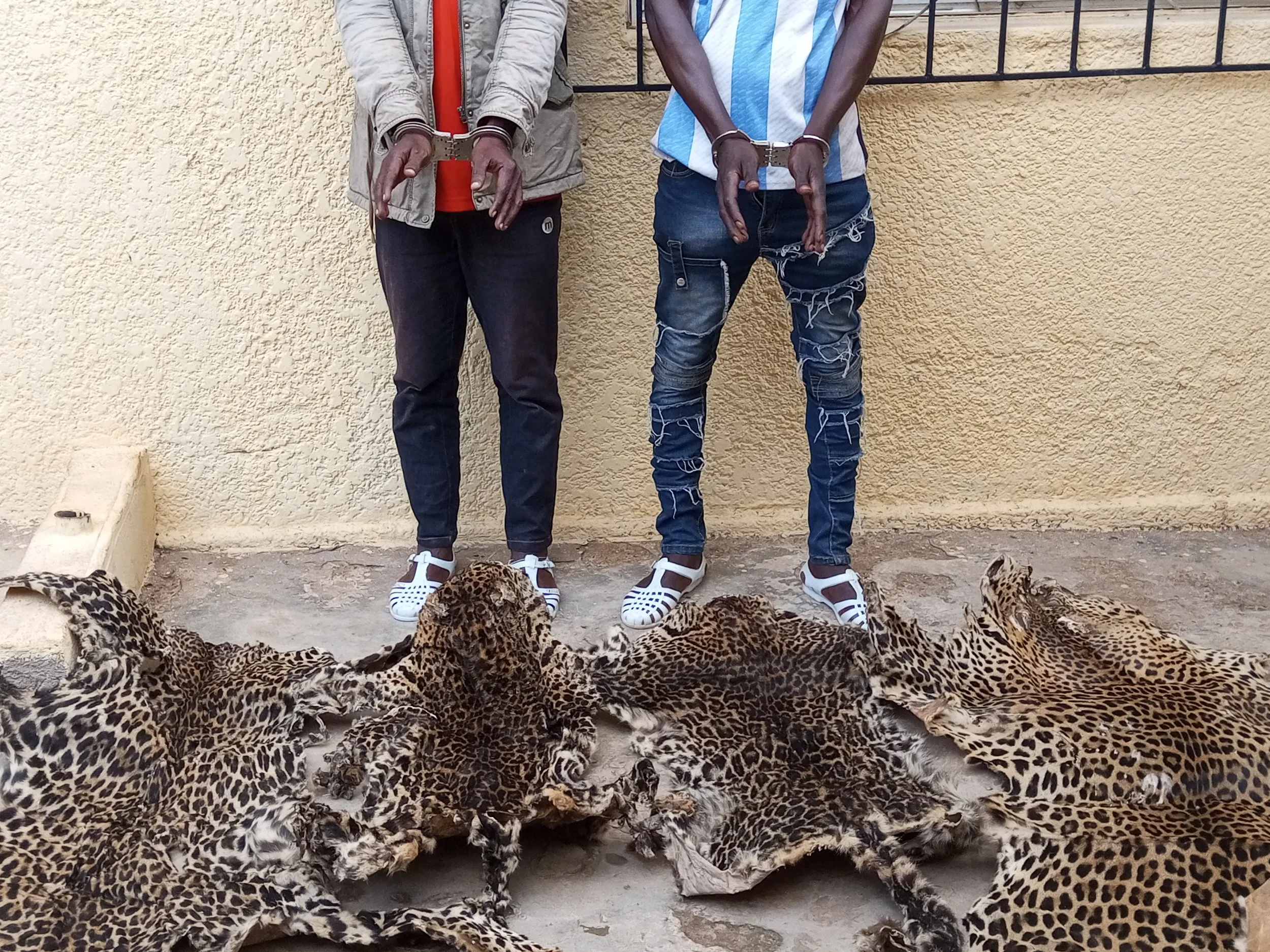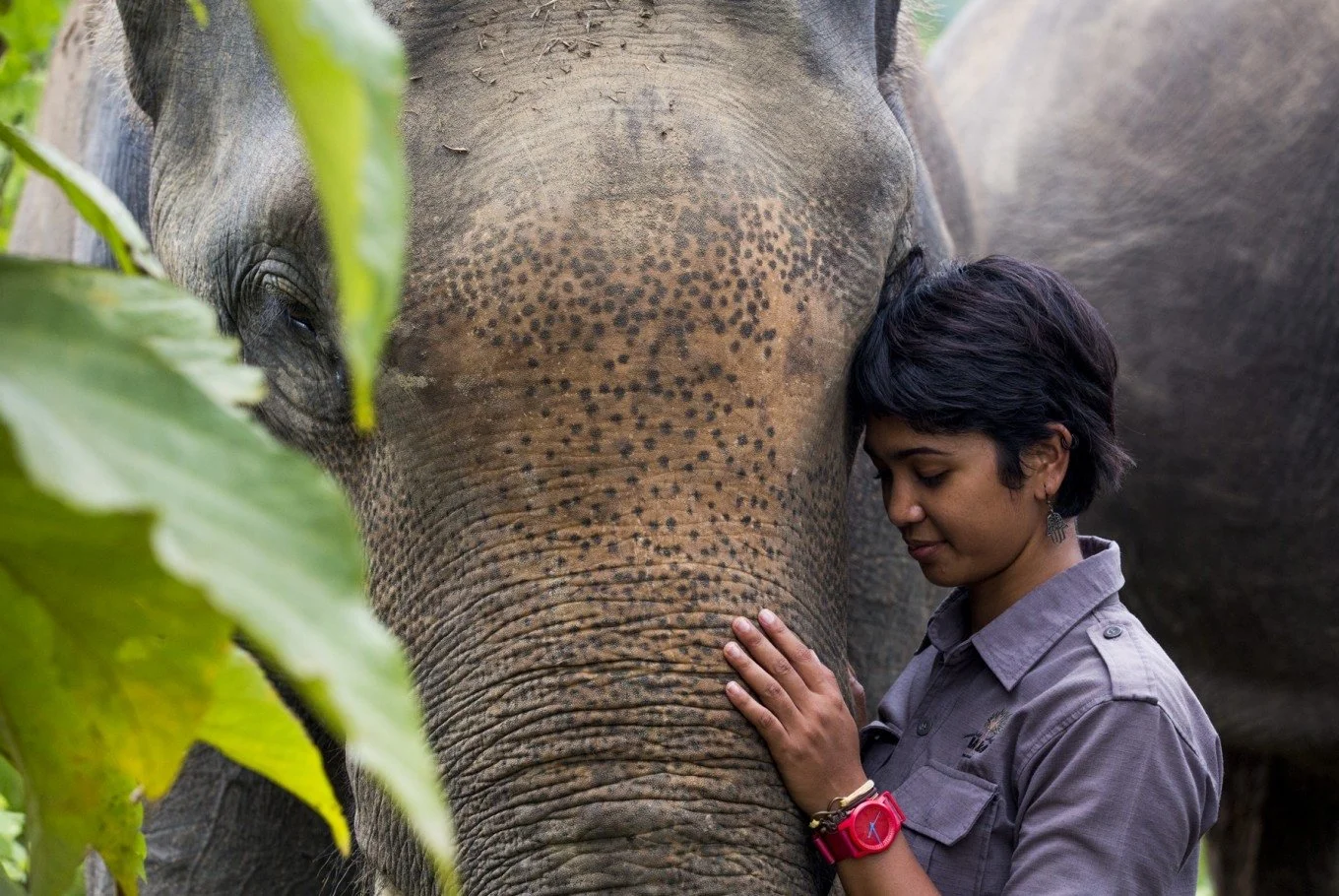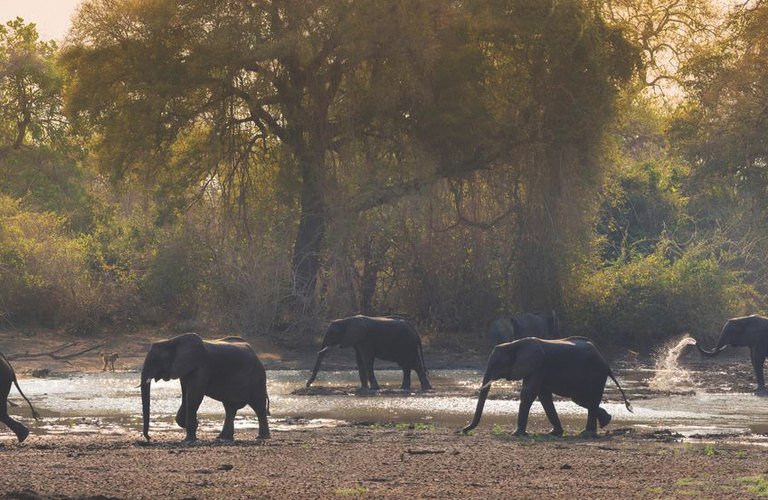Supporting Rapid Response Anti-Poaching Teams and Human-Wildlife Conflict Officers in the Ngorongoro Conservation Area
All images by ©Marcus WestbergAfrican People & Wildlife (APW) is the recipient of a grant from Global Conservation for the project “Supporting rapid response anti-poaching teams and human-wildlife conflict mitigation officers in the Ngorongoro Conservation Area.” This project is essential to the success of community-driven conservation programs in Tanzania.
As one of APW’s working landscapes, the Ngorongoro Conservation Area (NCA) is a priority area within the organization’s target geography of Tanzania. Part of the world-famous Ngorongoro-Serengeti-Mara Ecosystem, the NCA (8,292 km²) is a designated UNESCO World Heritage Site and one of the world’s greatest and most important reservoirs of large mammal biodiversity, including a significant number of African elephants. With large tracts of wildlife habitat and corridors that also support communal land use, the NCA is a particularly important area for projects that mitigate the threats to wildlife by fostering collaboration between protected area officials and village authorities.
Project Outcomes and Highlights
Key project outcomes and highlights from this grant include:
A 52% reduction in crop raiding incidents reported during peak conflict months in 2024 (compared to the same months in 2023)
Elephant observations over the same months each year remain relatively stable, suggesting that officer effort has not decreased nor has the occurrence of elephants in the area.
Project activities have resulted in quicker response rates and reduced incident time.
9 Human-Elephant Coexistence Officers in 4 villages supported via stipends and training to respond to HWC incidents in their communities
32 members of NCAA management and zonal wardens trained in human-elephant conflict response and community engagement
120 community members participated in elephant conflict mitigation training and awareness campaigns.
1,200 farmers reported crop raiding incidents to the HEC officers, contributing to a conflict database.
The HEC Officers look for elephants in the early morning after they respond to a crop-raiding incident reported by a local community member.
Activity Area 1: Rapid Response Teams
APW facilitated a 3-day workshop with 10 people to foster collaboration between the Ngorongoro Conservation Area Authority (NCAA) and community Human-Elephant Conflict (HEC) officers, since the Collaborative Framework document formalizes the role of HEC Officers in conflict monitoring and community relations.
Further empowering the collaboration, APW formally handed over the project vehicle to the NCAA. APW’s Chief Program Officer, Charles Trout, presented the keys to the acting Conservation Commissioner of the NCA, Gloria Bideberi, in a handover ceremony at the NCAA office in Karatu District. The vehicle serves as a crucial resource for the NCAA and HEC Officers, enabling them to reduce response times for conflict incidents and create safer spaces by providing road transport for individuals traveling on foot and in areas near wildlife. The NCAA also recently used the vehicle for wildlife rescue activities, successfully rescuing a buffalo from deep mud.
Community engagement, especially while on patrol, is important for earning the trust of the local people whose lives are affected by wildlife. Building rapport while guiding towards understanding how to coexist with wildlife is at the core of African People and Wildlife's program.
Community Networks of Human-Wildlife Conflict Mitigation officers
New officers were trained, then returned to their respective villages, formalized their role with the village government, and spread awareness to their communities. The officers began to receive reports of human-elephant conflict and other crop-raiding incidents. From April 2023 to January 2025, the Human-Elephant Conflict (HEC) Officers in all four villages responded to over 1,200 reports of crop raiding.
The APW Human-Wildlife Coexistence program team conducted Human-Elephant Conflict Mitigation trainings in each village, using the Save the Elephants Human-Elephant Coexistence Toolbox as a guide. Each village underwent two rounds of training. In the first round, the APW team facilitated the establishment of community working groups led by the HEC Officers. The team then demonstrated the proper use of several HEC mitigation techniques, including chili smoke bricks and roman candles. The commander of an APW-supported Community Game Scout team, who has significant experience in deploying these tools, traveled to each village to perform the demonstrations.
One of the HEC Officers throes a chili smoke bomb above the cornfield with a possible elephant inside of it.
During the second round of training in each village, the APW team handed over HEC mitigation tool kits to the community working groups. These tool kits include chili bombs, chili smoke bricks, airhorns, and roman candles. To engage a large community audience, the APW team, in collaboration with Karatu District, hosted a football tournament as part of an awareness-raising campaign for the project and for HEC mitigation in general. All four villages partook in the tournaments, with over 120 individuals participating. The events were covered by a local radio channel, Lumen FM, giving the team the opportunity to increase outreach and awareness of HEC mitigation methods beyond the four participating villages.
Since March 2023, the HEC Officers recorded at least 5,800 observations of elephants with an average group size of 2.6 individuals per observation. The majority of observations were evidenced by dung (70%), with 26% identified by tracks and 4% by visual sightings. Note that these figures do not represent the number of individuals, nor can APW estimate population size based on these data. While most observances can be verified from photos upon request, due to the large number of observances, HEC Officer reports of elephants are not routinely verified by APW.
A farmer shows his crops that were raided in the middle of the night by a small herd of elephants.
STATUS OF HUMAN-ELEPHANT CONFLICT IN THE NCA
Crop-Raiding Incidents
From April 2023 to January 2025, HEC officers in the project landscape responded to 1,204 reports of crop raiding. Elephants were responsible for 48% of these conflicts, with buffalo responsible for another 32%. Bush pigs, baboons, monkeys, elands, and warthogs were also reported as crop-raiding species.
A total of 575 reports of elephant crop raiding were analyzed for this report. Corn was the most commonly raided crop, followed by beans. In total, farm owners reported 506.4 acres of crops damaged by elephants out of a total of 3,186.1 acres of farmland owned by these individuals.
Most of the elephant crop raiding incidents (82%) did not include any property damage. However, the property damage that occurred included damaged fences, broken waterlines, and one incident involving a damaged food store. In over half of reported incidents of elephant crop raiding, the elephants dispersed in less than 30 minutes. The majority of conflict events took place at night, with elephants either passing through farms or fleeing relatively quickly due to fear or chase.
Lighting chili smoke bricks on fire is an effective deterrent for wildlife that raids farmlands.
Mitigation Methods
Across all months of data collection, noise-making techniques were the most commonly reported mitigation methods used by farm owners. However, throughout the project, HEC Officers reported a shift towards other, more effective methods. For instance, from January to July 2024, fire was the most commonly reported mitigation method used by farm owners. The use of fire, often in the form of chili smoke bricks, likely explains much of the observed decrease in conflict this year. In all previous reporting periods, noisemaking was the most commonly used deterrent, which is inconsistent in mitigating conflict. There was a significant increase in the number of farm owners reportedly using tobacco as a deterrent later in the project period. There was also a decrease in the total number of farm owners reportedly not using any mitigation methods. This suggests increased awareness of conflict mitigation methods at the community level, even among farm owners who have not been directly engaged in a project activity or training.
In 60% of incidents with elephants, the officers reported that the elephants dispersed because people chased them away. In 28% of incidents, the farm owners reported that the elephants seemed to only be passing through and dispersed quickly.
Human Injury
During this grant period, HEC officers responded to seven incidents of human injury. Elephants were responsible for three of these incidents, one of which sadly resulted in a human fatality. The other two elephant incidents resulted in minor to severe injuries. Buffalo was responsible for four incidents of human injury during this grant period.
African People & Wildlife, the Ngorongoro Conservation Area Authority, and Global Conservation all work together inside the Ngorongoro Crater itself to build and document transects that will help identify wildlife populations within the crater.
OTHER NOTABLE ACHIEVEMENTS
In August 2024, APW expanded the HEC monitoring and mitigation program to Longido District with support from the WWF Land for Life program. 20 new HEC Officers were recruited and trained to record incidents of crop raiding, property damage, and water infrastructure damage in the Lake Natron landscape, which borders the Ngorongoro Conservation Area. HEC mitigation toolkits were also distributed in this new landscape in November.
APW supported TANAPA in deploying Savannah Tracking collars on five elephants in the Mkomazi landscape. This effort will provide critical elephant movement information to APW and TANAPA, improving the effectiveness of conflict mitigation for the communities surrounding the protected area. Unfortunately, the freeze on US Fish and Wildlife Service’s international funding has put this project in jeopardy, and APW is looking to raise funds to cover the collaring effort and other significant aspects of the project.
We are also pleased to announce that Esri's 2024 StoryMaps Competition has selected APW's ArcGIS StoryMap, which highlights this project, as a finalist. The StoryMap includes a feature showing real-life examples of HEC mitigation techniques being implemented in the field and highlights the photography of Marcus Westberg from his assignment with Global Conservation.
















